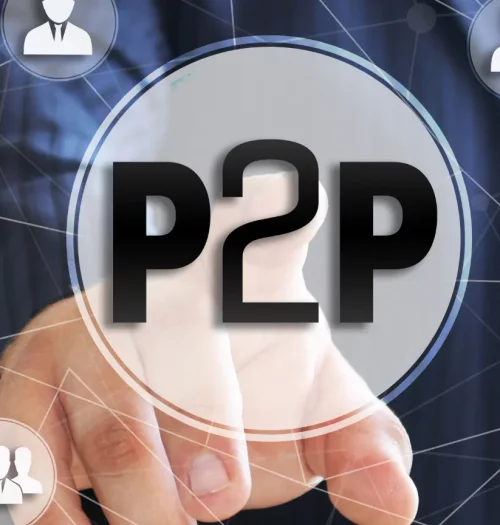One of the biggest boons to mankind in recent years has been the internet. It has made the world one large market place where communication happens in real time. The internet has affected every spectrum of our life making things more convenient.
One of the key arenas where the benefits of the internet have been put to good use is the financial services industry, especially banking. It has enabled banking to be location agnostic ensuring that irrespective of where a person is, he/she has access to banking facilities. Branchless Banking is the new mantra of the banking industry. In this article, we will try to explain the different aspects of Branchless Banking and how it has revolutionized access to banking services.
You may also like: Interesting things about History of Lending
What is branchless banking?
Let us start by explaining to you what is Branchless banking. In a layman’s language, branchless banking is exactly as it sounds – banking without going to a bank. India is a vast country with around 70% of the population in rural areas. Most of these rural areas are inaccessible. Opening a branch in each village is neither feasible nor profitable. Moreover, the education or literacy level among the population of rural areas is also not very promising. Herein comes to the role of branchless banking.
Branchless banking is the method of delivering banking services outside conventional bank branches. This is mainly done through agents and using communication technology. Mobile phones or point of sale (POS) terminals are the main vehicles through which branchless banking services are delivered in unbanked rural areas.
Evolution of branchless banking
Financial inclusion has always been a concern in most countries of the world. It has been more so in India due to the demographic and geographic conditions of the country. It has always been a challenge to reach out to the underbanked rural areas. Opening bank branches is an expensive way of providing financial services. As per a study commissioned by the World Bank, banking penetration was 45% among the middle and high-income groups while only 5% among the low-income group in emerging markets of the world, before the launch of branchless banking.
This issue was a major problem. The telecommunications industry, on the other hand, was booming. Around this time, it was observed that mobile ownership was going up at a steady rate across all geographies of the world since 2000. There has been the addition of 3.3 billion unique mobile users in the decade between 2000 and 2010.
Mobile usage is expected to reach 5.5 million by 2022. Through various studies, a huge gap was found between users who have mobile and users who own bank accounts. Thus began a worldwide mission to reach out to the population who have a mobile phone but don’t have a bank account.
The story was no different in India. India has about 1.18 billion mobile phone subscriber as of February 2017 which is the second largest market in the world. Out of these, Rural India constitutes to about 496.39 million. The number of internet users leapfrogged 26% in the rural area. Hence, when it came to the question of financial inclusion, banks quickly recognized the convenience of tapping the mobile phone subscribers and surging ahead.
You May Also Like: Why Should You Use A Cloud-Based Loan Management Software?
Advantages of branchless banking
The advantages of branchless banking are manifold. To be fair, it should be looked at from both sides – the customer side and banking side.
Customer Perspective:
From the customer perspective, it is a convenience all the way. Be it urban based tech savvy customers or customers who are located in a rural area, there are a number of opportunities are open today to access banking services right from the comfort of their home or hometown.
Gone are those days when a customer had to run to the bank early in the morning, stand in long queues or wait for his/her turn with a token in hand. Today, all one needs is a device, and an internet connection and banking transactions can be done within minutes.
Gone are the days when countryside citizens folks travelled hours to visit a bank just to check their balance. Banking Correspondents have come as a boon to these folks by helping them enjoy the banking services without going through the hassle of travelling.
Business Perspective:
From the perspective of banks, it is less costly. There are an approximately 50% savings in cost when a bank moves to branchless channels instead of opening traditional bank branches. The saved cost can be utilized for various functions like launching newer products or reaching out to newer geographies.
Branchless banking in India
The Government of India has been smart in recognizing the potential in the branchless banking model and have been supporting the movement for quite some time now. In 2006, the banking industry was opened to agents as a method of financial inclusion. These agents were called Business Correspondents.
Business correspondents bridged the gap between the banking institutions and the unbanked masses located in the rural areas. They act as representatives of banks and play a crucial role in promoting the financial inclusion in India. These BC’s charge a small commission value for every client onboarding, transactions or deposits done by them.
Though this model was initially started as a “not-for-profit” thing, the banks went on to relax the strict norms to include “for profit” organisations to widen the horizon of outreach and offer banking services like accepting deposits, allowing withdrawal, collecting loan repayments and checking balance etc.. in the remote locations of the country.
Considering the poor network connectivity in the rural areas, Banking Correspondents are equipped with the Micro POS which would process transactions through AEPS (Aadhar Enabled Payment System) using just Aadhar data. This system allows a customer to take advantage of services like balance enquiry, cash deposit, and cash withdrawal services through a BC of any bank. But the Aadhar to Aadhar fund transfer option could be availed only through the BC of their respective bank.
You may also like: How Mobility is transforming the Lending Sector
Currently, India is improving public infrastructure to reach out to the unbanked rural population. Along with public infrastructure, three initiatives particularly is helping India move to a branchless banking economy. These three are:
Unique Identification
The mass scale role out of the Unique Identification number has eased out the KYC process in India making it completely online. All thanks to the Unique Identification Authority of India (UIDAI). Hence, the requirement to visit branches for opening accounts or carry out banking transactions has been removed completely.
Encouraging mobile payments
Economies which have become completely branchless have made use of the mobile phone as a transactional bank. India understands the same, and hence the RBI has launched the Inter-bank Mobile Payment Service or IMPS. Through IMPS, banking transactions can be carried out through the mobile. This has helped overcome the hindrances faced due to the enormous geographical expanse of the country.
Unified Payment Interface (UPI) enabled all smartphone users to send and receive money right from their mobile device using the UPI App. Using UPI we could transact without logging in to our bank account or even without the account information of the receiver. In fact, to complete a transaction all a person has to do is enter the recipient’s unique Virtual Payment Address (VPA).
Creating a VPA is rather easy as well, all you have to do is signup for it from UPI mobile app for your specific bank. Once a VPA is created, there would be a prompt to link the bank account to our VPA to facilitate faster payments. Once linked, users would be free from the hassle of entering their credentials every time
Government subsidies in electronic payment systems
Since 2012, the Government has adopted a mission to accept electronic payment as the official mode of payment for large amounts, especially payments that affect the rural area. Certain public subsidies are directly paid to beneficiaries’ account. This has removed the burden of large payment volumes from bank branches paving the way to branchless banking.
Coupled with this, the steady growth in mobile banking, mobile wallets or mobile money services have created a pathway towards branchless banking. Slowly, even non-banking financial services are also joining the bandwagon especially with the launch of e-KYC. Regulators like RBI and SEBI are continuing to encourage the move towards branchless transactions through pushing the technology acceptance model.
To conclude, it will be fair to say that journey towards branchless banking has just started not only in India but across the globe. As the day goes by, innovative distribution channels will emerge keeping the perspective of customer convenience in mind. The operators will soon be competing with each other for their space in the branchless world and be launching innovative products to grab their share. This definitely is a space to look out for. The future looks extremely promising.





